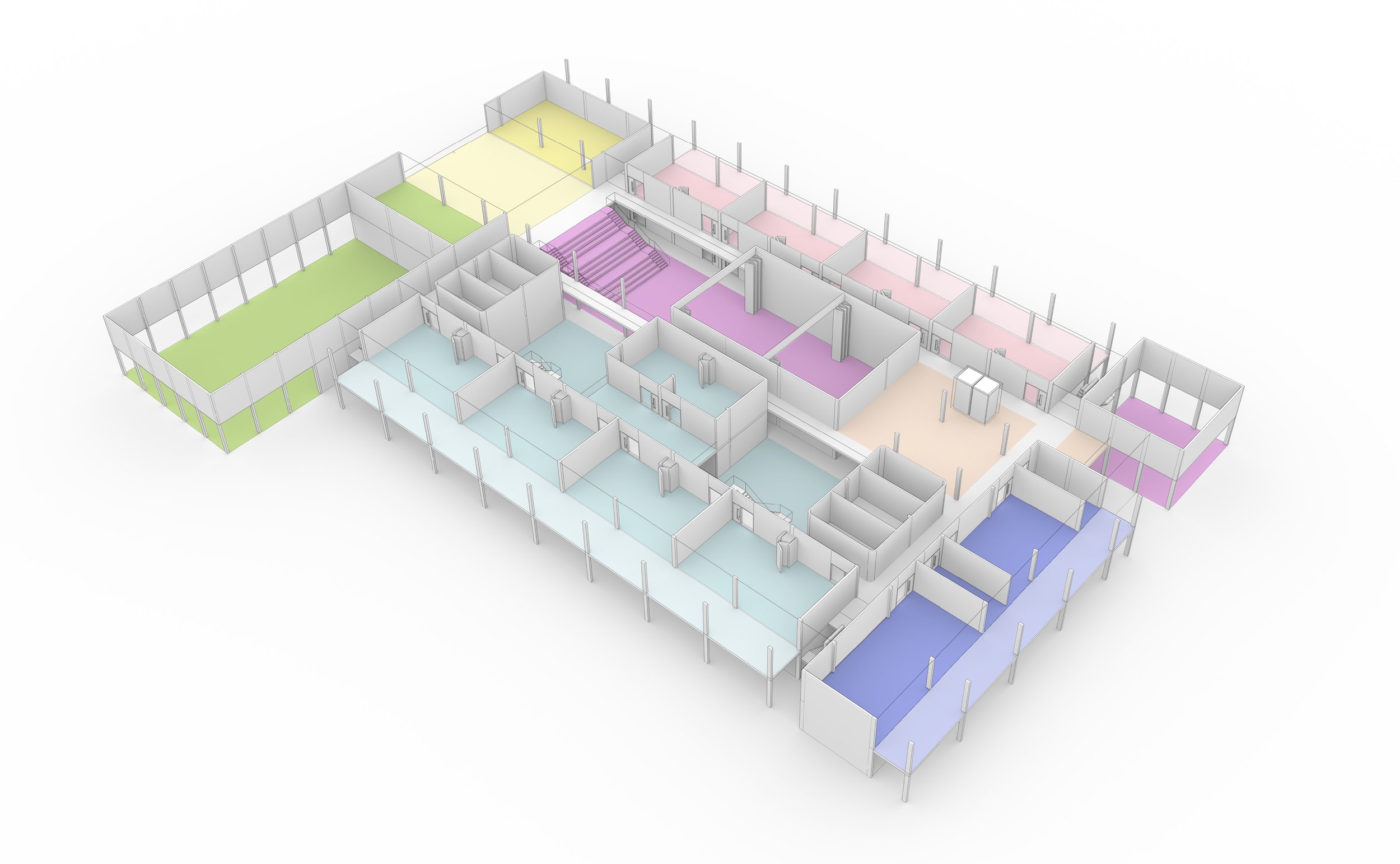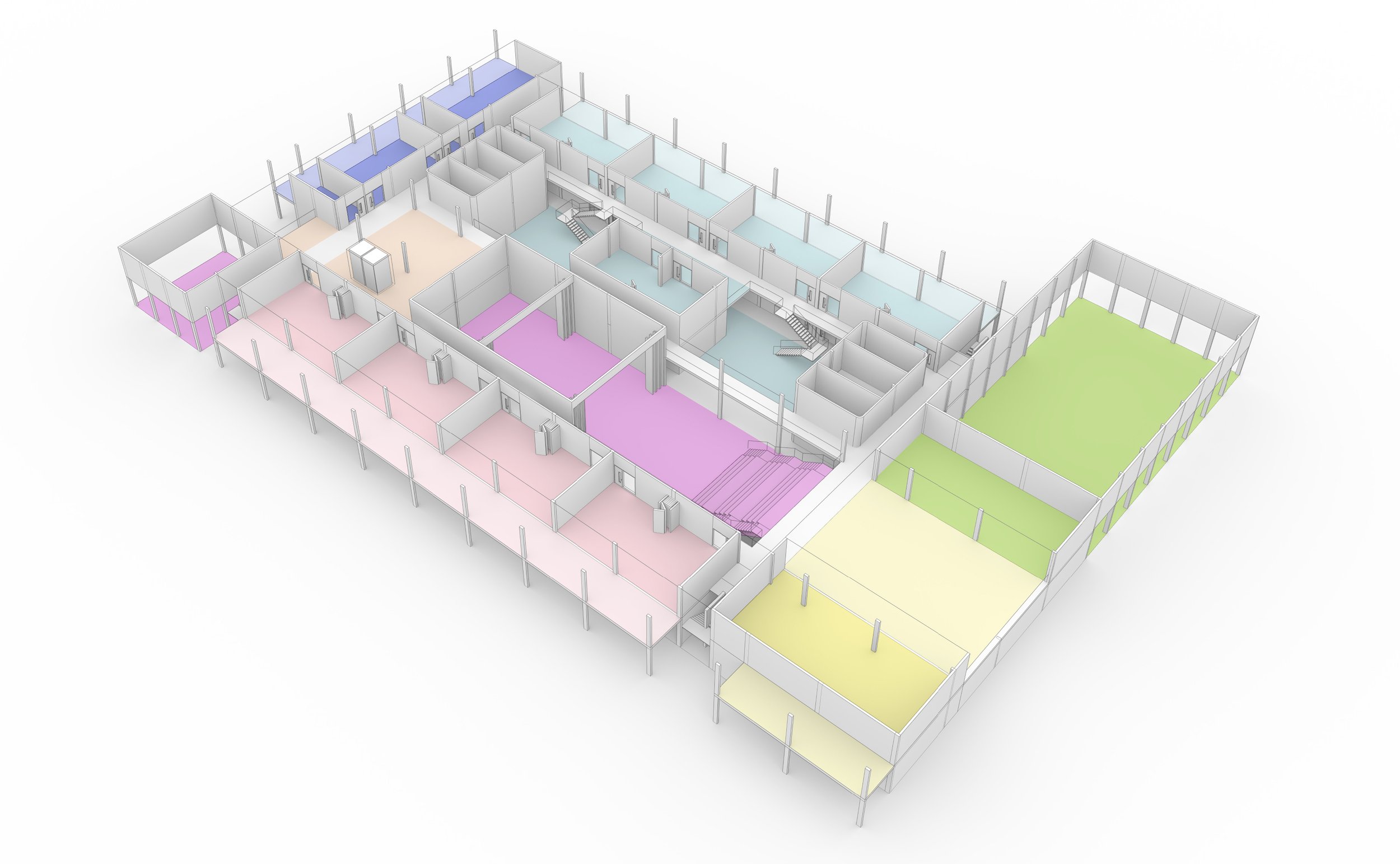
Mainstream school innovation and the advantages of ‘big sheds’
Big Education is one of many inner-city school trusts driven by the knowledge that preparing young people for life in the 21st century to be confident, resilient, successful members of society (and generate value within the economy) takes more than an ability to recite facts under exam conditions. Oracy – the skill (art?) not just of effective communication but more so the ability to advance and defend an idea among peers, lie at the core of the Trust’s teaching and learning strategies (or ‘pedagogy’ for short).
Whilst it would be perhaps hubristic to assert that good architectural design can improve learning outcomes, a failure to provide space (at a basic level) that is appropriate to pedagogy, is inexcusable. Whilst simple rows of classrooms catering for ‘batches’ of 30 children might have served industrial Britain in the Victorian era, it is possibly not the best environment in which to develop 21st Century young minds for a largely uncertain future in which the extent of creativity and intellectual agility are already becoming the de facto criteria by which humans thrive or simply survive.
Working within a challenging, predetermined internal floor area limit, we began a forensic dialogue with the Trust that reimagined a school environment, from the ‘blank sheet’, to house flexible and adaptable group learning spaces, multiple double-height ‘maker spaces’, and both formal and informal oracy spaces, in an arrangement conceived to foster the cross-disciplinary exchange of knowledge and ideas informed by precedent projects from the fields of education, tech industry and culture.
A smart approach to standardisation was taken by adopting proven, ‘big shed’ and ‘open building’ design strategies in which a ‘deep plan’, repeating grid planning module and logical circulation and servicing infrastructure informed the internal layout of the building for its ‘day one’ operation, whilst continuing to support its flexibility and adaptability over time.
Deep-plan, clear-span sheds are proven, cost-effective solutions for the creation of large, weather-proof environments, thanks in part to their advantageous volume to external envelope ratio, and therefore offer a compelling design and delivery approach in times of continuing austerity. Whilst perhaps not possessing the most dynamic massing, internally, they promise the potential for exciting, dynamic and inspiring learning environments that not only empower pedagogy but contribute to the great learning intangible - self-esteem.
We once heard it quoted by a professor studying the impacts of buildings on learning outcomes that ‘when you ask a child to describe what’s great about their school, they don’t talk about how good the classrooms are; they describe the social spaces, the sports and performance facilities.’ Of course, acoustics, air and light quality should meet basic standards, but the design and articulation of space are equally, if not more important. Innovation in education matters; fundamentally. These things are failed if accommodation is reduced to equations on a spreadsheet and a fixed model of what a school should ‘look like’.








